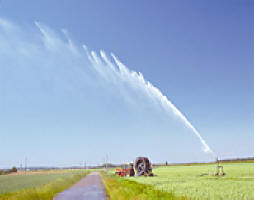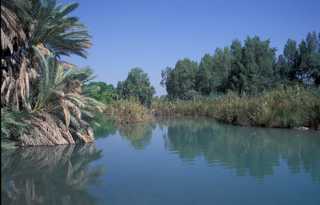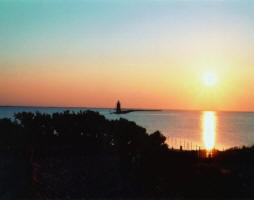 UAE: How to make it rain in the desert
UAE: How to make it rain in the desert
The United Arab Emirates (UAE) is trying to squeeze every last drop of rain from its clouds by launching salt missiles into them from planes. The technique is known as cloud seeding, and its purpose is to increase condensation in the hope that it might trigger a downpour. UAE is one of the most arid countries on Earth, and it hopes the controversial technique could help to increase its meagre annual rainfall.
The oil-rich desert nation ranks among the world's top 10 driest countries with an annual rainfall of just 78 millimetres (three inches), 15 times less than what falls in an average year in the UK. The country's National Centre of Meteorology and Seismology (NCMS) is now attempting to tackl the problem by running a cloud seeding programme. Its Abu Dhabi-based forecasters monitor weather radars to tell pilots flying official government aircraft when to take off on rain-inducing missions.
Whether cloud seeding is effective at increasing rainfall, however, is still under investigation. Many scientists doubt whether it has a noticable impact on rainfall levels. US ski resorts in Colorado, however, reportedly use the method to induce heavier snowfall. It was also used ahead of the 2008 Beijing Olympics opening ceremony to create a downpour elsewhere and keep the stadium dry. This involved firing rockets packed with silver iodide crystals into rain clouds over the suburbs of Beijing.
To cover its surging water needs, driven by rapid economic growth and a huge influx of workers, the UAE has resorted mainly to desalination - the process of removing salt from sea water to make it usable. The Gulf country accounts for 14 per cent of the world's desalinated water and is the second largest producer after neighbouring Saudi Arabia. The country has 33 desalination plants that provided 42 per cent of its needs, according to a 2013 report by the environment and water ministry.
Rain triggered through cloud seeding is much cheaper than desalinated water, according to Omar al-Yazeedi, head of research at NCMS. In 2010, four days of heavy rain induced by cloud seeding brought downpours equivalent to the nine-year output of a single desalination plant in Abu Dhabi, he said. Studies show that cloud seeding can increase the amount of rain by between five and 70 per cent, depending on the quality of the clouds, he said.
The American Meteorological Society said in 2010 that despite some uncertainty over its effectiveness, 'large potential benefits can warrant relatively small investments to conduct operational cloud seeding'. The UAE is also looking into methods to preserve the rain that does hit the ground, instead of allowing it to quickly evaporate or flow off into the sea. It has built dams and reservoirs to gather water that flood desert valleys.
The country has around 130 dams and levees with a storage capacity of about 120 million cubic metres (more than four billion cubic feet), according to the ministry report. NCMS executive director Abdulla al-Mandoos said studies were being prepared to plan more dams and to protect water, aimed at directing rain 'from the cloud right into the aquifer'. 'We do not want to waste a drop of water,' he said.
| Contact information | n/a |
|---|---|
| News type | Inbrief |
| File link |
http://www.dailymail.co.uk/sciencetech/article-3175773/How-make-rain-DESERT-UAE-fires-salt-rockets-attempt-seed-clouds-trigger-needed-downpours.html |
| Source of information | Yahoo |
| Subject(s) | ANALYSIS AND TESTS , CHARACTERISTICAL PARAMETERS OF WATERS AND SLUDGES , DRINKING WATER , DRINKING WATER AND SANITATION : COMMON PROCESSES OF PURIFICATION AND TREATMENT , ENERGY , FINANCE-ECONOMY , HYDRAULICS - HYDROLOGY , INFRASTRUCTURES , MEASUREMENTS AND INSTRUMENTATION , METHTODOLOGY - STATISTICS - DECISION AID , NATURAL MEDIUM , POLICY-WATER POLICY AND WATER MANAGEMENT , RISKS AND CLIMATOLOGY , SANITATION -STRICT PURIFICATION PROCESSES , SLUDGES , WATER DEMAND |
| Geographical coverage | United Arab Emirates, |
| News date | 27/07/2015 |
| Working language(s) | FRENCH |
 you are not logged in
you are not logged in





